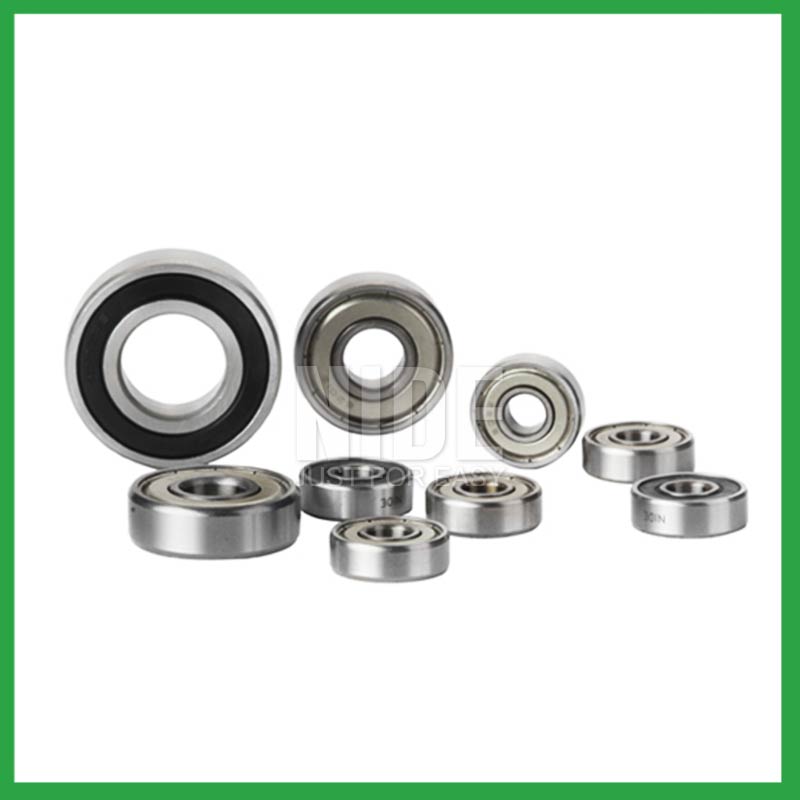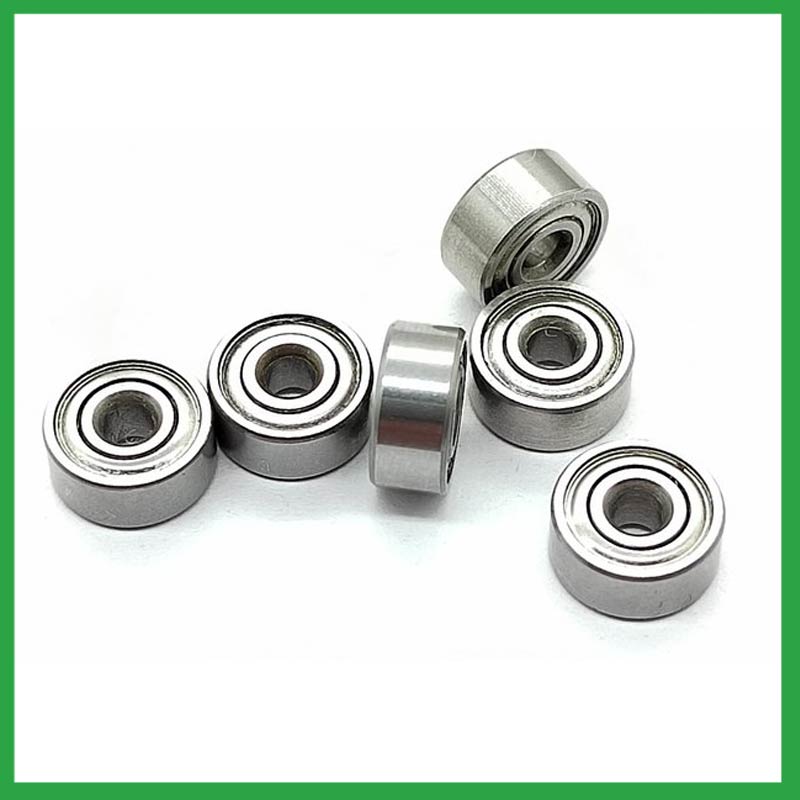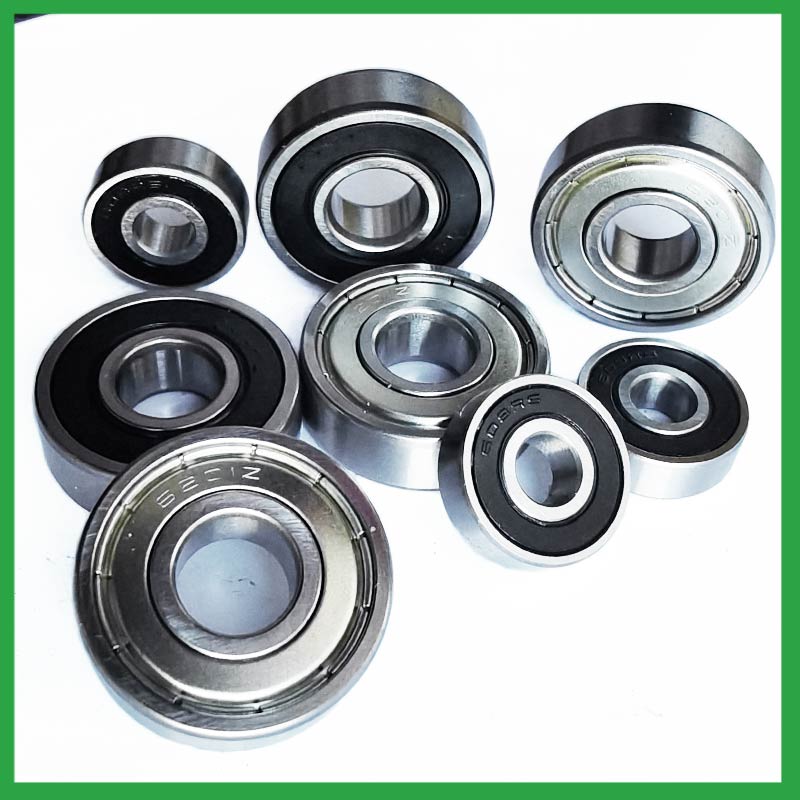PRODUCTS
CONTACT US
Ningbo Nide International Co., Ltd.
一一
· Contact person:Jack Zeng
· Mob/Whatspp/WeChat:0086-13738869026
· Email:emarketing@nide-group.com;marketing4@nide-group.com
· Add:No. 169, Wohushan Road, Daqi Subdistrict, Beilun District, Ningbo, China

Nide team could manufacture ball bearing as per customer’s drawing and samples.
If customer only has samples, we could also design drawing fo r our customer.
We also provide customized service.
Our ball bearing is widely applied the different industrials.
Ningbo Haishu Nide International Co., Ltd is one of the leading bearing manufacturers in China. We are a well-known supplier of high-quality commutator,magnet,insulation paper,ball bearing,thermal protector,fan. Our products are widely used in fields such as fan motor,air condition motor,compress motor,BLDC motor,electric automotive motor,servo motor,electric bicycle motor,water pump motor. We are proud to provide customers with the expected product knowledge, applied professional knowledge, quality control, and consistent reliable service.
We have modern computerized machinery and equipment to produce high-precision bearings. Our company is also equipped with complete chemical and metallurgical laboratories as well as standard room facilities.Nide has offices in India, Brazil, Korea, Turkey, and Argentina, good sales and service net work allow us to access and offer service to customers over the world easily and promptly.

| Parameter | Information |
| Product Name | ball slewing bearing |
| Place of Origin | China |
| Brand Name | Nide |
| Material | ceramics, etc. |
| Type | Ball |
| Warranty | 3months-1year |
| Port | Ningbo/Shanghai |
| Application | fan electric motor,textile machinery, etc. |
| Size(mm) | customize |
| Color | Silver gray+customized |
| Precision Rating | as per customer's requirement |
| Certification | ISO 9001 Certification,CE-stator coil winding inserting machine,CE-insulation paper inserting machine,etc |
| Feature | Strong carrying capacity,High precision...etc |
| Packaging Details | Suitable for sea transportation |
| Service | one-stop service |
| Model Number | ball bearing |
| Supply Ability | 100000-500000 Piece/Pieces per Month |
| Lead time (days) | 15-20 (To be negotiated) |
Please note: The above table data is for reference only. For specific information, please contact us.
ball slewing bearing have the advantages of durability,lightweight,compactness, and high load, and are used in main motion mechanisms and components, such as resistors,tires,automotive drive components,transmission shafts, different motion mechanisms and accessories of airplanes and motorcycles.
During the installation process, pollution from dirt and wear media should be prevented;
Temperature and humidity should be controlled to avoid excessive temperatures during startup and operation;
It should be operated and lubricated in the correct reverse direction to avoid unnecessary damage.
Ball bearings have many advantages, making them highly competitive in the market.
Firstly, they are very durable and have good wear performance, making their service life longer than many other types of bearings.
Secondly, they are easy to install and can provide low friction performance in various applications.
Thirdly, they require a relatively low level of maintenance, making them cost-effective.
In addition, compared to many other types of bearings, their purchase cost is relatively low, making them an economical choice.




ball slewing bearing---FAQs Guide
2.Can ball slewing bearing operate in high-temperature environments like industrial ovens or furnaces, and how are they protected from heat-related damage?
3.As a ball slewing bearing manufacturer,What is your payment method?
4.Can ball slewing bearing handle shock loads and high-impact conditions in heavy machinery?
5.Can ball slewing bearing be customized with special coatings or treatments to meet specific industry standards or regulatory requirements?
6.Can ball slewing bearing be used in vacuum or cleanroom environments, and what measures are taken to prevent outgassing or contamination?
7.Can ball slewing bearing operate in high-speed applications, and what design features make them suitable for such conditions?
8.What is a ball bearing?
9.How do manufacturers ensure the quality and reliability of ball slewing bearing through material selection and precision machining?
10.What are the advancements and innovations in ball slewing bearing technology that have emerged in recent years?
1.What are the common materials used in ball slewing bearing manufacturing?
Most ball slewing bearing are made of a type of steel known as high carbon chromium steel, often called chrome steel. This is used for reasons of cost and durability. Bearings are also made from other materials such as stainless steel, ceramics and plastic.
2.Can ball slewing bearing operate in high-temperature environments like industrial ovens or furnaces, and how are they protected from heat-related damage?
ball slewing bearing are capable of working at temperatures up to +842°F (+450 °C). Special lubricants, seals and coatings make this possible by protecting the ball bearings from heat damage.
3.As a ball slewing bearing manufacturer,What is your payment method?
We accept T/T, PAYPAL or Western Union, credit card or via ALIBABA Assurance order.
4.Can ball slewing bearing handle shock loads and high-impact conditions in heavy machinery?
As a general rule, ball slewing bearing are used at higher speeds and lighter loads than are roller bearings. Roller bearings perform better under shock and impact loading. Ball bearings tolerate misalignment better than roller bearings do. Roller bearings can handle heavy combined radial and thrust loads.

5.Can ball slewing bearing be customized with special coatings or treatments to meet specific industry standards or regulatory requirements?
Yes, ball slewing bearing can be customized with special coatings or treatments to meet specific industry standards or regulatory requirements.
1. Corrosion-resistant coatings: These coatings are used to protect the bearings from corrosion caused by exposure to moisture, chemicals, and other corrosive substances.
2. High-temperature coatings: These coatings are used to improve the thermal stability and performance of bearings in high-temperature environments.
3. Food-grade coatings: These coatings are specially designed for applications in the food and beverage industry, where bearings come into contact with food, beverage, or pharmaceutical products.
4. Anti-static and non-conductive coatings: These coatings are used to dissipate static electricity, which can cause damage to electronic components.
5. Specialized lubrication treatments: Bearings can be treated with specialized lubricants that meet specific industry standards or regulatory requirements.
6.Can ball slewing bearing be used in vacuum or cleanroom environments, and what measures are taken to prevent outgassing or contamination?
Bearings specify stainless steel for vacuum or cleanroom applications as stainless steels used for the rings, balls and retainer exhibit low outgassing. They usually supply open or shielded stainless steel bearings as vacuum bearings as these will outgas less than a nitrile rubber sealed bearing.
7.Can ball slewing bearing operate in high-speed applications, and what design features make them suitable for such conditions?
They have very low rolling friction and are optimized for low noise and low vibration. This makes them ideal for high-speed applications. ball slewing bearing are comparatively easy to install and require minimal maintenance.
8.What is a ball bearing?
A ball bearing is a type of rolling-element bearing that uses balls to maintain the separation between the bearing races.
The purpose of a ball bearing is to reduce rotational friction and support radial and axial loads. It achieves this by using at least two races to contain the balls and transmit the loads through the balls. In most applications, one race is stationary and the other is attached to the rotating assembly (e.g., a hub or shaft). As one of the bearing races rotates it causes the balls to rotate as well. Because the balls are rolling they have a much lower coefficient of friction than if two flat surfaces were sliding against each other.
Ball bearings tend to have lower load capacity for their size than other kinds of rolling-element bearings due to the smaller contact area between the balls and races. However, they can tolerate some misalignment of the inner and outer races.

9.How do manufacturers ensure the quality and reliability of ball slewing bearing through material selection and precision machining?
High-precision measuring instruments, such as micrometers and gauges, are used to check the dimensions of the rings and balls to ensure they meet tight tolerances. Surface Finish Inspection: Surface finish is assessed using profilometers to ensure the required smoothness and low friction characteristics.
10.What are the advancements and innovations in ball slewing bearing technology that have emerged in recent years?
Significant advancements have been made in ball slewing bearing steels over the years. Modern, ultra-clean bearing steels contain fewer and smaller non-metallic particles, giving ball bearings greater resistance to contact fatigue.

